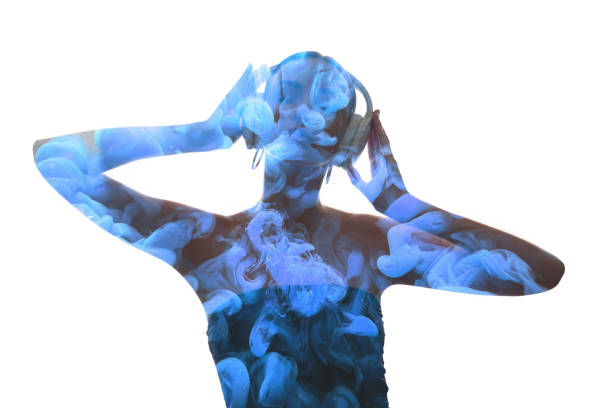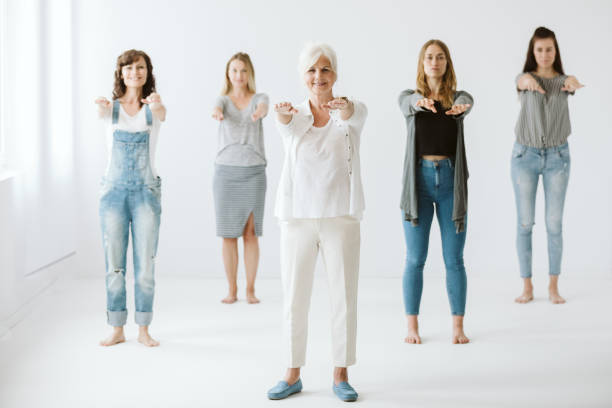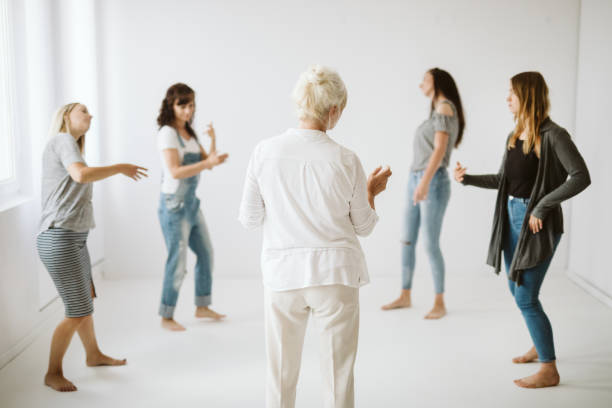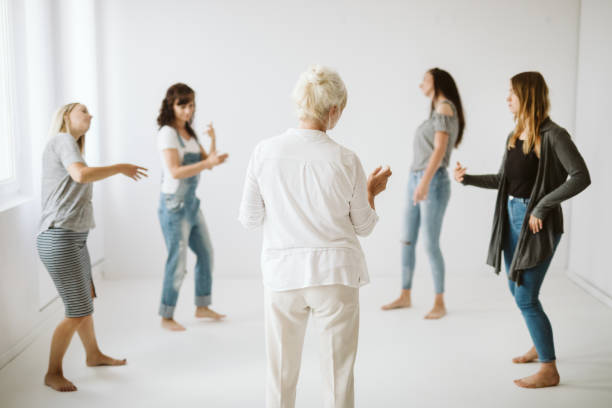Body movement Therapy, Expressive Arts Therapy, Health
Dance Therapy Counseling
Stress and mental health problems are all too typical in today’s fast-paced environment. Traditional counseling and therapy approaches can be beneficial, but what if there was a new way to get into our emotions and heal via movement? Enter dance therapy counseling, a holistic approach to emotional well-being that mixes the power of dance with psychology.
What is Dance Therapy Counseling?
Dance therapy counseling, also known as dance/movement therapy (DMT), is a type of self-expression and healing that employs movement and dance. It acknowledges that the mind and body are inextricably linked and that by engaging in physical activity, people can get a better understanding of their emotions and thoughts. Clients are encouraged to explore their feelings, release tension, and build coping mechanisms through guided sessions with a qualified dance therapist.
Dance therapy counseling believes that the body has wisdom and can serve as a portal to emotional recovery. Individuals can access and express feelings that may be difficult to articulate verbally by including movement and dance in therapy sessions. This type of therapy focuses on using movement as a tool for self-discovery and personal improvement rather than acquiring dance techniques or choreography.

The Benefits of Dance Therapy Counseling
Dance therapy counseling has various advantages and can have a significant impact on a person’s overall well-being. Movement and dance can help people reconnect with their bodies, release trapped emotions, and enhance their general mood. It provides a safe and nonverbal means of expressing oneself, allowing for more emotional exploration and self-awareness.
One of the most important advantages of dance therapy counseling is its capacity to alleviate stress and anxiety. Endorphins, the body’s natural “feel-good” chemicals, have been demonstrated to be released by movement, which can help alleviate symptoms of anxiety and sadness. Furthermore, dance therapy can encourage relaxation and mindfulness, allowing people to discover a sense of serenity in the midst of their everyday bustle.
Dance therapy counseling can also improve body image and self-esteem. Individuals might gain a stronger appreciation for their physical identities by engaging in movement and connecting with their bodies. This might be especially beneficial for persons who have body image issues or have endured trauma connected to their bodies.
How Dance Therapy Counseling Works
Typically, dance therapy counseling sessions begin with an initial evaluation in which the therapist and client discuss therapeutic goals and expectations. The dance therapist will next establish a secure and supportive setting for the client to express themselves through movement and emotions. Depending on the client’s interests and needs, sessions can be performed individually or in a group environment.
Various approaches and exercises may be employed during a dance therapy session to enhance self-expression and emotional release. Improvisation, guided movement, mirroring, and structured dances are examples of these. To improve the therapeutic process, the therapist may use props such as scarves or ribbons.
The dance therapist’s purpose is to lead and support the client during the session, assisting them in developing a deeper connection with their bodies and emotions. Clients are encouraged to explore their ideas and feelings via movement and dance, recognize patterns, and build healthy coping techniques.

Dance Therapy Counseling Techniques and Exercises
Dance therapy counseling combines a variety of strategies and exercises that are suited to the needs of each client. Among the most prevalent techniques are:
- Authentic Movement: Allowing the body to move freely and spontaneously without any preset movements or intentions is what this approach entails. It encourages people to listen to their bodies and trust their instincts, allowing for deep emotional exploration and self-expression.
- Guided Imagery: In this technique, the dance therapist leads the client through a visualization exercise, exploring emotions and personal experiences with imagery and metaphors. This can be a very effective method for acquiring understanding and encouraging emotional healing.
- Mirroring: This entails the therapist mirroring the client’s movements in order to create a sense of connection and empathy. This strategy can make people feel seen and validated while also encouraging self-awareness and acceptance.
- Group Dance: In dance therapy counseling, group dance activities are frequently utilized to build a sense of community and support. Individuals can have a shared sense of connection and belonging by dancing together, while also learning from and supporting one another.

Incorporating Dance Therapy into Traditional Counseling Sessions
Dance therapy counseling can be utilized independently or in conjunction with standard counseling sessions. Many therapists believe that integrating conversation therapy with movement and dance can improve the therapeutic process and allow clients to reach deeper levels of healing and self-discovery.
Therapists can help clients embody and express their feelings in a more palpable way by introducing movement into typical counseling sessions. This can be especially effective for people who have difficulties expressing themselves verbally or accessing and processing their emotions.
Individuals who are averse to traditional kinds of therapy or find it difficult to engage in therapy through discussion alone may benefit from incorporating dance therapy into traditional counseling sessions. Movement and dance provide an alternate road to recovery, allowing people to explore their feelings and acquire understanding in a more natural and comfortable way for them.

Dance Therapy for Specific Mental Health Conditions
For a lot of different mental health problems, dance therapy coaching has been shown to help. Movement, dance, and psychology are all part of this therapy, which makes it flexible and useful for people of all ages and backgrounds.
People who are dealing with stress and worry may find that dance therapy is a great way to let out their feelings and relax. People can release stress and worry through movement and dance, which can make them feel more calm and well.
It has also been shown that dance therapy can help people who are depressed. Endorphins are chemicals that are released when you move or dance. These chemicals can help improve your mood and ease the symptoms of sadness. Dance therapy can also give people a sense of purpose and joy by letting them be artistic and expressive. This can make them feel better about life overall.
When it comes to trauma treatment, dance therapy counseling is a one-of-a-kind way to heal. Often, trauma is stored in the body, and talk therapy alone may not always be enough to get to and deal with these deeply held feelings. People can let go of the pain in their bodies through movement and dance, which can help them heal and change.

Finding a Dance Therapy Counselor
It’s important to find a licensed dance therapist who is trained and skilled in this method if you’re interested in dance therapy counseling. Most dance therapists have a master’s degree in dance/movement therapy or a related area. They also have a lot of training and have been supervised by a clinical supervisor.
You can start your search for a dance therapy counselor by calling local mental health groups or looking in online listings. To make sure a therapist is a good fit for your needs, you should ask about their credentials, experience, and areas of focus.
It’s also important to think about things like location, cost, and fit when picking a dance therapy counselor. It’s important for therapy to have a good therapeutic relationship, so take the time to find a dance therapist who makes you feel safe and supported.
Dance Therapy Certification and Training Programs
There are a number of certification and training classes you can take to become a dance therapist. These programs typically require a bachelor’s degree in a related field, such as dance, psychology, or social work, and involve a combination of coursework, supervised clinical practice, and personal therapy.
Certification programs in dance/movement therapy are offered by organizations such as the American Dance Therapy Association (ADTA) and the International Association for Dance Movement Therapy (IADMT). These programs provide the necessary training and education to become a licensed dance therapist and typically require a minimum number of supervised clinical hours.
Dance Therapy Resources and Organizations
People who want to learn more about dance therapy guidance can find a lot of information and groups that offer it. The American Dance Therapy Association (ADTA) and the International Association for Dance Movement Therapy (IADMT) are both trustworthy groups that help dance therapists and people interested in dance therapy by giving them information, tools, and chances to meet other people in the field.
Besides that, there are a lot of books and study papers that talk about dance therapy counseling. The Art and Science of Dance/Movement Therapy” by Sharon Chaiklin and Hilda Wengrower and “Dance/Movement Therapy: A Healing Art” by Fran J. Levy are two books that you might want to read.
Conclusion
In a world where stress and mental health issues are rising, dance therapy coaching is a unique and effective approach to healing and discovering yourself. Dance therapy combines movement, dance, and psychology to help people express their thoughts, release stress, and solve difficulties.
Dance therapy counseling can help you heal and grow safely and creatively if you’re struggling with stress, anxiety, sadness, trauma, or body image. Move and dance can help people discover themselves, connect with their bodies, and acquire inner wisdom.
Dance therapy may be a good way to try something new in psychotherapy. Enter a world where dance may heal and teach you about yourself, leading to mental health.


